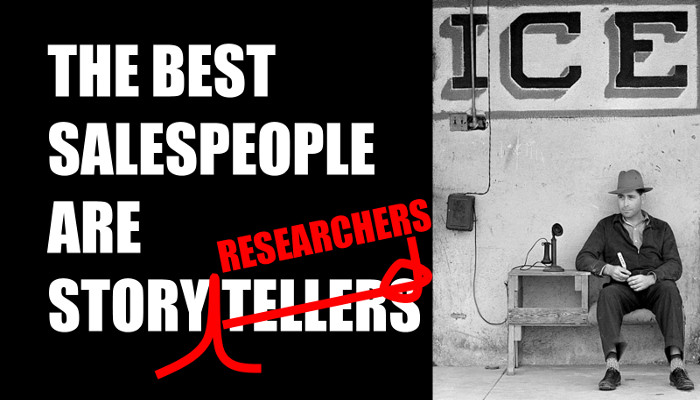
I first read SPIN Selling by Neil Rackham thirty years ago. My intent was to learn about high-end selling. What I learned instead was the power of story research.
Most sales training is built upon three skills:
- probing
- objection handling
- closing
But Rackham’s research found that the most successful sales representatives didn’t excel in these areas. His team found that while these skills proved effective for low-value, transactional sales, they fell short as price-tags rose and lead-times extended. For these expensive sales, he recommended using his SPIN strategy–an acronym that represents Situation, Problem, Implication, and Need-Payoff.
While I don’t remember the book making this connection directly, the SPIN strategy is the foundation of any business story. For example:
Once upon a time, everything was going well.
Then a situation happened.
The customer researched the situation and found a big problem.
If this big problem wasn’t solved, the customer would suffer implications.
Although the customer found many solutions to the problem, she wondered, “Was it worth the cost?” What was the need-payoff? Would the solution solve the problem, stave the implications, and ultimately, provide a payoff?
The best salespeople aren’t necessarily great storytellers. They’re great researchers. They ask questions to uncover a prospect’s situation, the problem to solve, the implications of not solving the problem, and need-payoff. If they’ve done a good job at uncovering these things, they’ll have gathered the ingredients for the ultimate sales pitch: the customer’s story.
Photo Credit: Lee, Russell, photographer. Ice for sale. Harlingen, Texas. Cameron County Harlingen Texas United States, 1939. Feb. Photograph. Retrieved from the Library of Congress, https://www.loc.gov/item/2017782201/